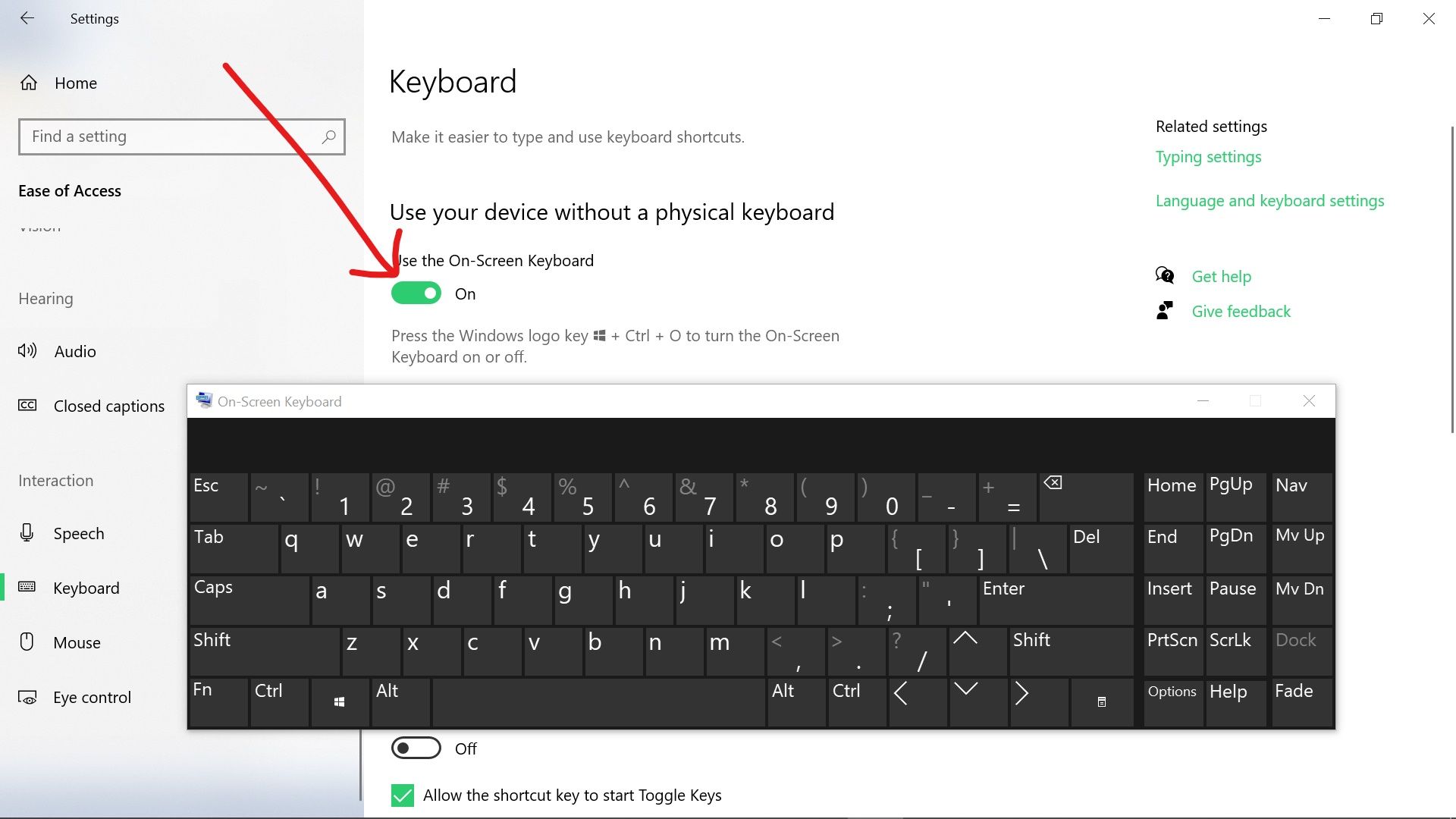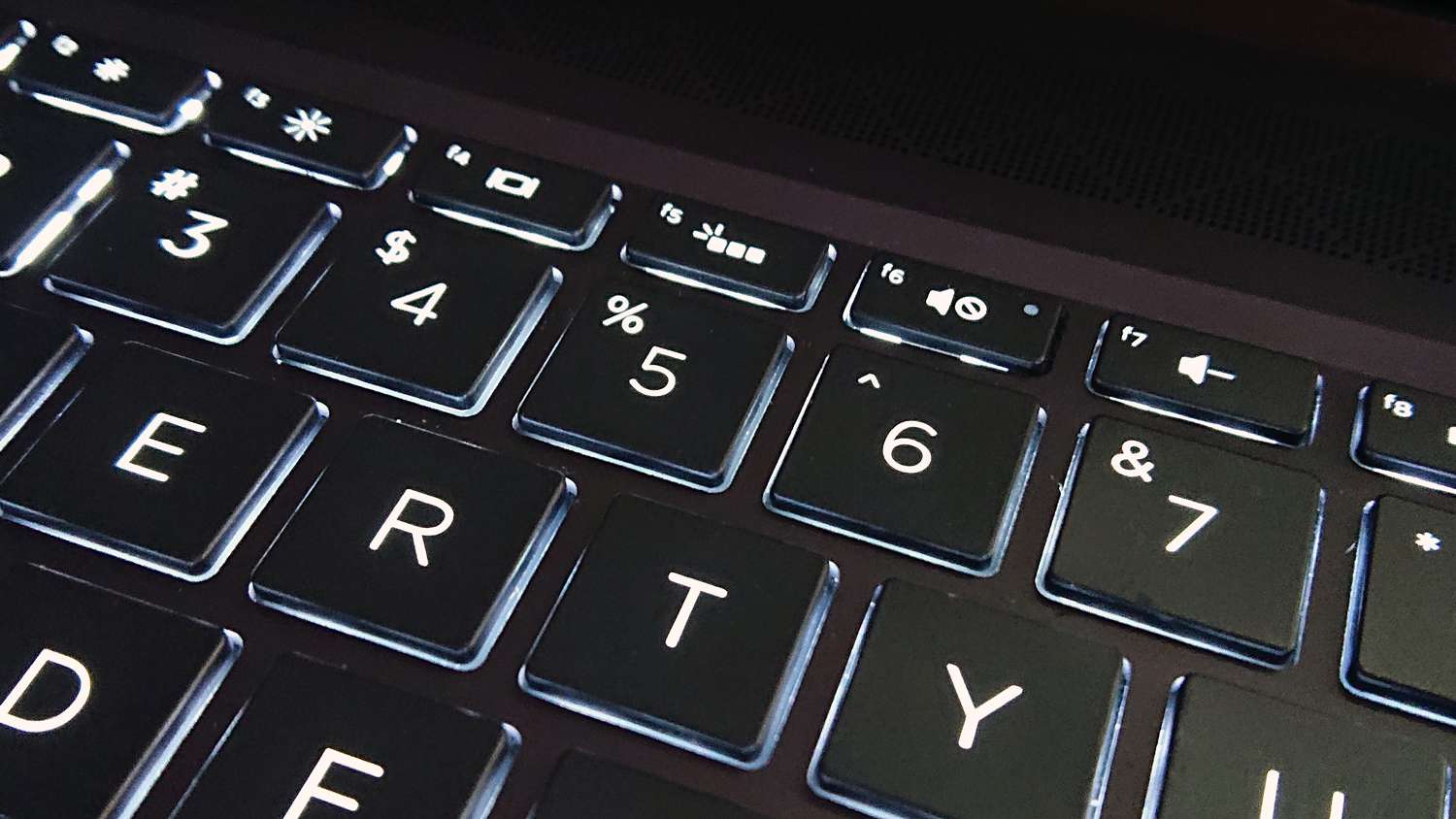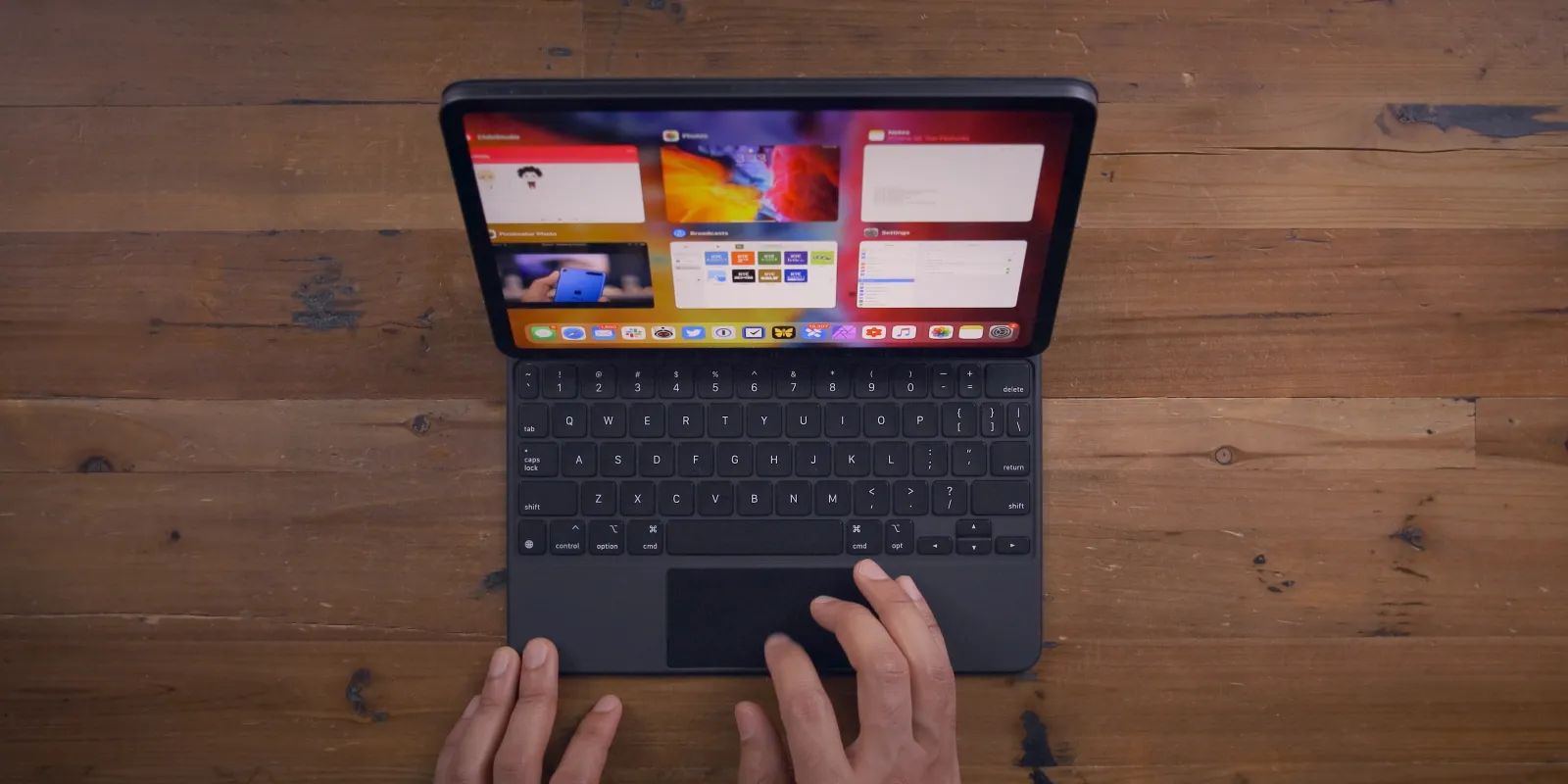Common Reasons Why Your Keyboard May Not Type
Have you ever experienced the frustration of trying to type on your keyboard, only to find that it’s not registering any keystrokes? This can be an incredibly annoying issue, especially if you rely on your keyboard for work or school. The good news is that there are several common reasons why your keyboard may not be typing, and most of them can be easily fixed. Let’s take a closer look at some of these reasons:
- Keyboard Not Plugged In Properly: One of the most common reasons why your keyboard may not be typing is simply because it’s not properly plugged into your computer. Double-check the connection at the back of your computer to ensure it’s securely plugged in.
- Loose or Damaged USB Cable: If you’re using a USB keyboard, the cable connecting it to your computer may be loose or damaged. Try unplugging and then plugging it back in, or even using a different USB port to see if that resolves the issue.
- USB Port Issues: Sometimes the problem lies with the USB port itself. Test the port by connecting a different device to see if it works. If other devices don’t work either, you may need to troubleshoot the USB port or consider using a USB hub.
- Batteries in Wireless Keyboard Need Replacement: If you’re using a wireless keyboard, it’s possible that the batteries are running low and need to be replaced. Check the battery compartment and replace the batteries if necessary.
- Sticky Keys or Debris Underneath Keys: Over time, keys on a keyboard can become sticky or debris may accumulate underneath them, preventing them from registering keystrokes. Clean your keyboard thoroughly and make sure there are no obstructions.
- Outdated or Corrupted Keyboard Drivers: Keyboard drivers are software programs that allow your computer to communicate with your keyboard. Outdated or corrupted drivers can cause issues with typing. Update or reinstall the keyboard drivers to see if it resolves the problem.
- Software or Operating System Issues: Sometimes, keyboard typing issues can be caused by software conflicts or problems with the operating system. Restart your computer and check for any updates or troubleshoot any software-related issues.
- Faulty Keyboard Hardware: Unfortunately, keyboard hardware can malfunction over time. If all else fails, try connecting a different keyboard to see if the problem persists. This can help determine if the issue lies with the keyboard itself.
- Physical Damage to the Keyboard: Accidental spills or drops can cause physical damage to the keyboard, resulting in typing issues. If you suspect physical damage, you may need to replace the keyboard entirely.
These are just a few of the common reasons why your keyboard may not be typing. Troubleshooting and fixing the issue will depend on the specific cause, but with a little patience and knowledge, you can usually get your keyboard back up and running in no time.
Keyboard Not Plugged In Properly
One of the most common reasons why your keyboard may not be typing is because it’s not properly plugged into your computer. This may seem like an obvious solution, but it’s easy to overlook when you’re in a rush or dealing with multiple cables.
First, check the connection at the back of your computer to ensure the keyboard is securely plugged in. Sometimes, the connection may have become loose over time due to movement or accidental tugs on the cable. Make sure the cable is firmly inserted into the appropriate port.
If your keyboard is a wireless model, ensure that the wireless receiver or USB dongle is properly connected to the USB port. In some cases, the receiver may have its own power switch that needs to be turned on for the keyboard to work. Check for any indicator lights or buttons on the receiver that may help troubleshoot the issue.
If you’re using a laptop, make sure the keyboard is securely connected and that any external keyboard options are disabled. Sometimes, laptops may have an Fn key that allows you to switch between using the built-in keyboard or an external one. Pressing the key combination to switch may resolve any typing issues.
If you have confirmed that the keyboard is connected properly and it still doesn’t type, try using a different USB port. It’s possible that the USB port you initially used is experiencing issues. Connect the keyboard to a different port and see if it starts working. If it does, there may be a problem with the original port that needs further troubleshooting.
In some cases, a simple restart of your computer may be necessary. If the keyboard still doesn’t type after reconnecting it and trying different ports, try restarting the computer to refresh the system and establish a proper connection with the keyboard.
By ensuring that your keyboard is plugged in properly and establishing a secure connection, you can eliminate this common issue and get back to typing with ease.
Loose or Damaged USB Cable
If you’re using a USB keyboard, one possible reason why it may not be typing is due to a loose or damaged USB cable. Over time, constant movement or accidental tugs on the cable can result in a loose connection or even damage to the cable itself.
To check if the USB cable is the culprit, start by unplugging it from your computer and then plugging it back in firmly. Ensure that it clicks into place and is securely connected. Sometimes, a loose connection can simply be resolved by reinserting the cable properly.
If reinserting the cable doesn’t solve the issue, try using a different USB port on your computer. It’s possible that the original port you used is faulty, preventing the keyboard from functioning correctly. Connecting the keyboard to a different port may establish a proper connection and enable it to type.
Another aspect to consider is the condition of the USB cable itself. Inspect the cable for any signs of physical damage, such as fraying, cuts, or kinks. Damage to the cable can disrupt the flow of data and power, resulting in typing issues. If you notice any damage, you may need to replace the USB cable with a new one.
In some cases, using a USB extension cable or a USB hub can also cause typing issues. These additional components may introduce unnecessary complexity and result in a weak connection between the keyboard and the computer. Try connecting the keyboard directly to the computer without any extension cables or hubs to eliminate this as a potential problem.
If you’ve tried different USB ports, checked for cable damage, and eliminated the use of extension cables or hubs, and the keyboard still doesn’t type, it’s possible that the USB cable itself is faulty. Consider testing the keyboard on a different computer to see if it functions correctly. If the keyboard works on another computer, you may need to replace the USB cable or consider using a wireless keyboard as an alternative.
Remember, a loose or damaged USB cable can often be the cause of a non-responsive keyboard. By ensuring a secure connection and addressing any cable issues, you can resolve this problem and get back to productive typing.
USB Port Issues
If your keyboard is connected via a USB cable and it’s not typing, the issue might be related to the USB port on your computer. USB port issues can prevent the keyboard from functioning properly, but there are steps you can take to troubleshoot and resolve the problem.
Firstly, try connecting a different device, such as a mouse or a USB flash drive, to the same USB port. If the device doesn’t work, it indicates that the problem lies with the port itself. In this case, you’ll need to troubleshoot the USB port to restore its functionality.
One possible solution is to restart your computer. Sometimes, a temporary glitch or software conflict can cause USB ports to stop working. Restarting your computer can refresh the system and potentially resolve the issue.
If restarting doesn’t fix the problem, you can try unplugging all USB devices connected to your computer and then plugging them back in one by one. This process known as “power cycling” can help reset the USB ports and establish a proper connection.
If the USB port issue persists, you can also try connecting the keyboard to a different port on your computer. This will help determine whether the issue is specific to the port you were initially using or if it’s a more general problem with USB functionality.
Additionally, it might be worth checking for any software or driver updates related to USB ports. Outdated or incompatible drivers can cause issues with USB devices. Go to the manufacturer’s website or use your computer’s update utility to ensure that all necessary drivers are up to date.
In some cases, a USB port issue may require advanced troubleshooting or even hardware repairs. If you’ve exhausted all the above measures and the keyboard still doesn’t type, consider consulting a professional technician who can diagnose and address the specific USB port problem.
Remember, USB port issues can prevent your keyboard from functioning correctly. By following these troubleshooting steps, you can identify and resolve the USB port issue, allowing your keyboard to type as intended.
Batteries in Wireless Keyboard Need Replacement
If you’re using a wireless keyboard and it’s not typing, one of the first things to check is the batteries. Over time, batteries can drain, leading to a loss of power and a non-responsive keyboard.
Begin by locating the battery compartment on your wireless keyboard. This is typically located on the underside of the keyboard or at the back. Open the compartment and check the batteries for any signs of corrosion or leakage. If you notice any damage, handle the batteries carefully and dispose of them properly.
If the batteries appear to be in good condition, but you’ve been using the keyboard for an extended period of time, it’s possible that they are simply running low. Replace the batteries with fresh ones, ensuring that you insert them correctly according to the polarity markings (+ and -) mentioned in the compartment.
Once the new batteries are inserted, give the keyboard a moment to establish a connection. Some wireless keyboards may have a power switch that needs to be turned on for them to work. Check for any indicator lights on the keyboard or a Bluetooth/Wireless connection icon on your computer to verify that the keyboard is active and ready to type.
If you’ve replaced the batteries and the keyboard still doesn’t type, try unplugging the wireless receiver or USB dongle from your computer and then plugging it back in, allowing the computer to detect and establish a new connection with the keyboard.
If, after attempting these steps, the keyboard remains unresponsive, consider testing the keyboard on a different computer. This will help determine if the issue is with the keyboard itself or with your computer’s setup. If the keyboard works on another computer, you may need to further troubleshoot or seek technical assistance to resolve the problem.
Remember, wireless keyboards rely on batteries for power. By regularly checking and replacing the batteries, you can ensure that your wireless keyboard maintains a consistent power supply and continues to type effectively.
Sticky Keys or Debris Underneath Keys
If your keyboard is not typing as expected, it’s possible that there may be sticky keys or debris obstructing the keys’ normal functioning. Over time, dust, food particles, or other substances can accumulate underneath the keys, preventing them from registering keystrokes.
Start by visually inspecting the keyboard for any visible debris or crumbs between the keys. Gently turn the keyboard upside down and tap it lightly to dislodge any loose debris. You can also use a can of compressed air to blow away any stubborn particles.
If the keys feel sticky or unresponsive while typing, it may be necessary to clean the keyboard more thoroughly. Prepare a mild cleaning solution by mixing equal parts water and isopropyl alcohol. Dampen a cloth or cotton swab with the cleaning solution, being careful not to saturate it, and gently wipe the affected keys to remove any sticky residue.
In some cases, keys may need to be removed for a more thorough cleaning. However, be cautious when removing keys, as excessive force or improper handling can cause damage. Refer to the manufacturer’s instructions or search for specific tutorials on how to safely remove keys for cleaning.
Once the keys are removed, clean both the keys and the keyboard base with the cleaning solution using a soft cloth or cotton swab. Allow the keys to dry completely before reattaching them to the keyboard. Make sure that each key is properly aligned and seated in its original position.
If cleaning the keys and removing debris doesn’t resolve the typing issues, there might be an underlying mechanical problem. In this case, it’s advisable to contact the manufacturer’s customer support or a professional technician for further assistance.
Remember, sticky keys or debris can hinder the normal functioning of your keyboard. By regularly cleaning and maintaining your keyboard, you can prevent these issues and ensure smooth and accurate typing.
Outdated or Corrupted Keyboard Drivers
If your keyboard is not typing properly, it’s possible that the issue lies with outdated or corrupted keyboard drivers. Keyboard drivers are software programs that facilitate communication between your keyboard and your computer’s operating system.
Outdated or incompatible keyboard drivers can result in typing issues, such as keys not registering or incorrect characters appearing on the screen. To address this problem, you can update or reinstall the keyboard drivers.
One way to update keyboard drivers is through Windows Device Manager. Press the Windows key + X and select “Device Manager” from the menu. In the Device Manager window, expand the “Keyboards” category, right-click on your keyboard, and choose “Update driver. Windows will then search for updated drivers and install them if available.
If updating the driver doesn’t resolve the issue, you may need to reinstall the keyboard drivers. To do this, return to the Device Manager, right-click on your keyboard, and select “Uninstall device”. After uninstalling the drivers, restart your computer. Upon reboot, Windows will automatically reinstall the driver for your keyboard.
In some cases, manual driver installation may be necessary. Visit the keyboard manufacturer’s website and search for the latest drivers for your specific keyboard model. Download and install the drivers according to the provided instructions.
If updating or reinstalling the keyboard drivers doesn’t solve the typing problem, it’s worth considering performing a system restore to revert your computer’s settings to a previous state when the keyboard was functioning correctly. To do this, search for “System Restore” in the Windows search bar, open the corresponding settings, and follow the prompts to restore your system to an earlier date.
If none of these steps work, there may be a deeper software-related issue with your computer’s operating system. In such cases, it may be necessary to seek technical assistance from a professional or contact the manufacturer’s support team for further guidance.
Remember, outdated or corrupted keyboard drivers can cause typing issues. By updating or reinstalling the drivers, you can ensure that your keyboard communicates effectively with your computer’s operating system, allowing you to type without any problems.
Software or Operating System Issues
If your keyboard is not typing correctly, it’s possible that the issue is related to software conflicts or problems with your computer’s operating system. Software or operating system issues can manifest in various ways, including unresponsive keys, delayed keystrokes, or incorrect characters appearing on the screen.
One of the first steps you can take is to restart your computer. A simple restart can help resolve temporary glitches or conflicts that may be affecting your keyboard’s performance. After the restart, check if the keyboard is typing normally.
If restarting doesn’t solve the issue, it’s a good idea to check for any available software or operating system updates. Updating your computer’s software can address bugs or compatibility issues that may cause keyboard problems. Go to your computer’s settings or control panel and look for the option to check for updates. Follow the prompts to install any pending updates.
In some cases, third-party software or background processes may interfere with the functionality of your keyboard. To troubleshoot this, try booting your computer into safe mode. Safe mode loads only essential system files and drivers, allowing you to identify if any software conflicts are causing the keyboard issue. If the keyboard works fine in safe mode, it’s likely that a third-party application is causing the problem. You can then proceed to uninstall recently installed software or use a process of elimination to identify the problematic application.
Another troubleshooting step is to perform a system scan for malware or viruses. Malware can cause various issues with your computer, including keyboard-related problems. Use a reliable antivirus program to scan your system and remove any detected threats.
If the keyboard issues persist, you might consider restoring your computer to a previous state using a system restore point. System restore allows you to roll back your computer’s settings to a date when the keyboard was functioning correctly. To perform a system restore, search for “System Restore” in the Windows search bar and follow the provided instructions.
In rare cases, more advanced troubleshooting may be necessary, such as repairing or reinstalling the operating system. This should be done with caution and only after backing up important data.
If you’re unsure of how to proceed or the issue still persists, it’s recommended to seek assistance from a professional technician or consult the support resources provided by your operating system or computer manufacturer.
Remember, software conflicts or operating system issues can cause keyboard problems. By implementing the steps outlined above, you can address these issues and restore the proper functionality of your keyboard.
Faulty Keyboard Hardware
If your keyboard is not typing properly, there is a possibility that the issue lies with the hardware itself. Over time, constant use and wear can lead to mechanical defects in the keyboard, resulting in unresponsive or malfunctioning keys.
To determine if the problem is due to faulty hardware, it’s a good idea to test the keyboard on a different computer. If the keyboard exhibits the same typing issues on another computer, it indicates that the problem is with the keyboard hardware.
If your keyboard is still under warranty, contact the manufacturer’s support or customer service for assistance. They may be able to provide troubleshooting steps specific to your keyboard model or arrange for a repair or replacement if necessary.
If the warranty has expired or you prefer not to go through the manufacturer, you can try cleaning the keyboard thoroughly to see if it resolves the issue. Dust, dirt, or debris can accumulate over time and affect the keyboard’s performance. Refer to the manufacturer’s guidelines or search for tutorials on how to safely clean your specific keyboard model.
In some cases, opening up the keyboard and inspecting the internal components may be required. However, this should only be done if you have the necessary expertise and are comfortable working with electronic components. If you’re unsure, it’s best to seek assistance from a professional technician to avoid causing further damage.
If cleaning and inspecting the keyboard hardware do not yield any results, it may be necessary to consider replacing the keyboard altogether. Depending on the extent of the issue, the cost of repairs, or the age of the keyboard, it may be more cost-effective and efficient to invest in a new keyboard.
Remember, faulty hardware can cause typing problems in your keyboard. By testing, cleaning, and evaluating the keyboard’s condition, you can determine if the issue lies with the hardware and take appropriate steps to address it.
Physical Damage to the Keyboard
If your keyboard is not typing properly, it’s possible that there may be physical damage to the keyboard itself. Accidental spills, drops, or any form of physical trauma can cause keys to become unresponsive or malfunction.
Inspect your keyboard thoroughly for any visible signs of physical damage. Look for cracks, broken keys, or any loose or missing components. If you notice any damage, it’s important to exercise caution when handling the keyboard to avoid further harm.
In cases of minor damage, such as a sticky or unresponsive key, you can attempt to clean the affected area with a mild cleaning solution or isopropyl alcohol. Gently remove any residue or debris, being careful not to use excessive force that could cause additional damage. Allow the keyboard to dry completely before testing if the key functions properly.
However, if the damage is more severe, such as a broken or detached key or a cracked keyboard frame, it may be necessary to replace the keyboard entirely. Keyboard replacement parts are often difficult to find, and attempting repairs yourself may void any warranties or further damage the keyboard.
Depending on the age and cost of the keyboard, it may be more practical to invest in a new keyboard rather than attempting repairs. Consider the overall condition of the keyboard and the extent of the damage before making a decision.
If the keyboard is still under warranty, it’s recommended to contact the manufacturer’s support or customer service for guidance on how to proceed. They will be able to provide assistance regarding repairs, replacements, or any warranty coverage that may apply to the physical damage.
Remember, physical damage to the keyboard can significantly affect its functionality. By assessing the extent of the damage and considering appropriate repair or replacement options, you can ensure a fully functioning keyboard for your typing needs.
How to Troubleshoot and Fix Keyboard Not Typing Issues
Experiencing issues with your keyboard not typing can be frustrating, but there are several troubleshooting steps you can take to resolve the problem. Here’s a guide on how to troubleshoot and fix keyboard not typing issues:
- Check the Keyboard Connection: Ensure that your keyboard is properly plugged in or that the wireless receiver is securely connected to your computer.
- Inspect USB Cable or Wireless Batteries: If you’re using a USB or wireless keyboard, check for any loose or damaged USB cables or replace the batteries in the wireless keyboard if necessary.
- Clean the Keyboard: Remove any debris or sticky residue underneath the keys by gently cleaning the keyboard with a soft cloth or cotton swab moistened with a mild cleaning solution.
- Update or Reinstall Keyboard Drivers: Ensure that you have the latest keyboard drivers installed. Update or reinstall the drivers by accessing the Device Manager in Windows or downloading them from the manufacturer’s website.
- Check for Software or Operating System Issues: Restart your computer and check for any software updates. Scan for malware or perform a system restore if necessary.
- Test the Keyboard on Another Computer: If possible, connect the keyboard to a different computer to see if the issue persists. This can help determine if the problem is with the keyboard itself or with your computer’s setup.
- Consult the Manufacturer or Seek Professional Help: If none of the troubleshooting steps resolve the issue, contact the keyboard manufacturer’s support or consult a professional technician for further assistance.
It’s important to note that the specific steps to troubleshoot and fix keyboard not typing issues may vary depending on your keyboard model and computer setup. Always refer to the manufacturer’s guidelines or consult professional help when in doubt.
By following these troubleshooting steps, you can often diagnose and resolve the issue causing your keyboard not to type, allowing you to get back to productive typing once again.

























